
by Sandra Gulland | Apr 14, 2019 | Adventures of a Writing Life, Promotion, The Shadow Queen, The Writing Process, Work in Process (WIP) |
Where have I been?
When we arrived in San Miguel de Allende (Mexico) over five months ago, I went on a blogging spree. I was inspired, in part, by the refreshing wonder of fast internet. A month later, I stopped writing blog posts, getting down to the business of writing the keynote speech I was to give at the San Miguel Writers’ Conference mid-February.
As well, The Shadow Queen had been chosen as the Conference’s “Big Read” and an event was organized presenting it to book clubs. The event ended up including a video interview of me on writing The Shadow Queen, two lively short lectures by experts on the historical period, and a dramatic performance from the novel—plus champagne and authentic French beignets.
Being an all-or-nothing sort of person, I got very involved in scripting the film, which you can see here. Denis Lanson, the film-maker, did a wonderful job.
The short dramatic performance was my suggestion (in lieu of a reading). I discovered that it was quite a challenge to write. Wonderful actor friends Marilyn Bullivant and Rick Davey performed it. We went through several rehearsals (necessitating rewrites) together with Karen Kinney, head of the committee (a creative committee from heaven, IMO).
In short, a good part of December, January and early February was entirely taken up with writing the keynote, preparing readings for several Conference panels, and scripting the film interview and dramatic presentation of The Shadow Queen. All very exciting!

On stage before my keynote.
The Conference went wonderfully well. I still glow thinking of the reception to my keynote—a standing ovation from an audience of about five hundred—this in addition to the thrill of so many people reading The Shadow Queen. It was a highlight of my life as a writer.
In the weeks that followed, I struggled to get back to work on the WIP, an increasingly curious little novel about a young falconer in Elizabethan England. I went through all the stages of the writing process, including the requisite, “This is garbage, I should just retire” phase. (“What! You’re on Chapter Four already?” one writer’s husband would say whenever she voiced that thought.)
I made a self-appointed deadline mid-April to deliver an outline and character “bible” to Allison McCabe, the wonderful editor of historical fiction who worked with me on The Game of Hope. I delivered it Saturday morning, then celebrated with a lunch margarita at Casa Blanca, one of our favourite restaurants in San Miguel this year.

The working title of the WIP is now Raptor Wild, which I rather like. The “outline” is a mix of bare-bone scenes (mostly dialogue) and narrative plot points, weighing in at a hefty 14,392 words. The character “bible” is simply a page or two on each of the thirteen main characters, including a gyrfalcon and an elderly English Water Spaniel. A significant number of the characters die or are killed off rather early on in the story—somewhat too grim for a YA, I suspect.

“Beauty,” one of the WIP characters.
Although this was only an outline, I developed all the usual symptoms of being in final draft mode. Invariably, at that stage, I become obsessed. I get little sleep, cancel all activities that are not work-related, and become convinced I have a fatal illness. That’s when I think: Ah, almost there. How wonderful to send files off and experience a miraculous cure!
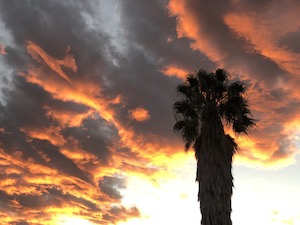
Now that Raptor Wild has been wrapped up (for now), it’s time to prepare to leave San Miguel—never easy. I love getting back home to Canada, but I hate leaving Mexico, too. We’ve had a wonderful winter here this year.

Next up, the paperback release of The Game of Hope, all gussied up in a beautiful new cover!
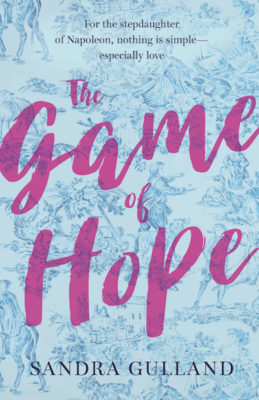
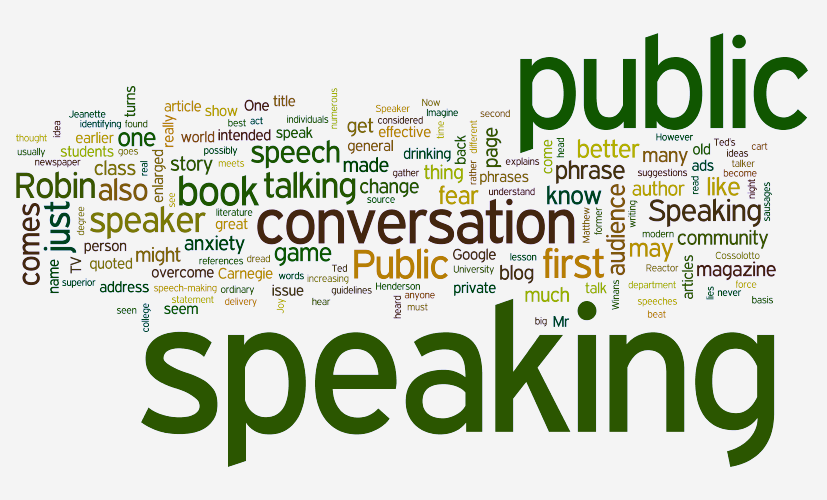
by Sandra Gulland | Dec 3, 2018 | Adventures of a Writing Life, Promotion, The Shadow Queen |
I’ve been combing through old blog posts, preparing for The Big Read in San Miguel de Allende of The Shadow Queen this coming January. For one, I need to have my website in order, especially the posts that relate to that novel. I also need to refresh myself on the process I went through in writing it. It has been a moving exercise.
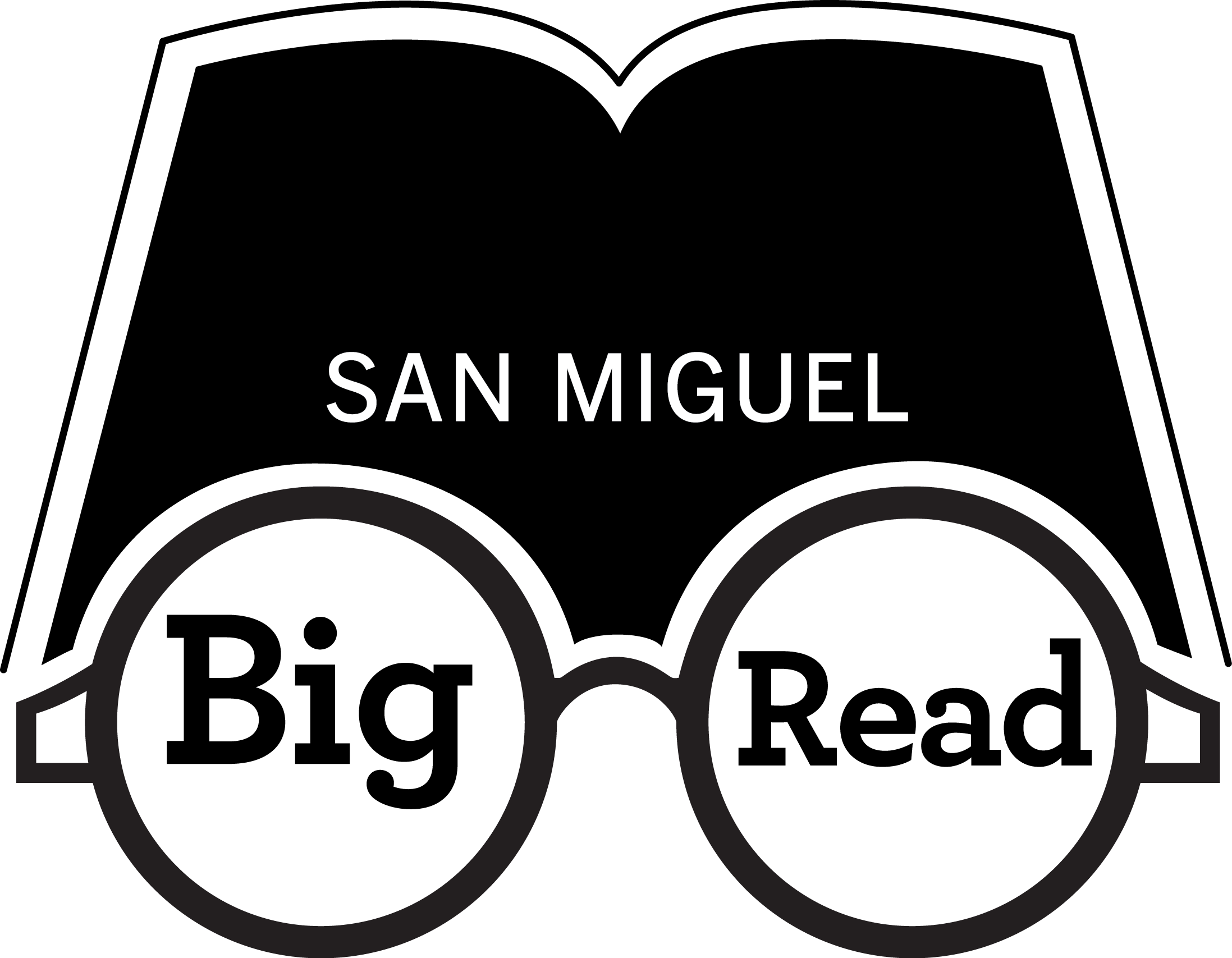
As soon as this is done, I will need to begin crafting my keynote speech. February will be upon me in no time. It seemed appropriate that in combing through my website I happened upon an interview I gave on Jane Friedman’s blog some time ago. In response to Kristen Tsetsi‘s question on public speaking, I outlined my process. I share it here — with some additional stories of things I’ve learned since.
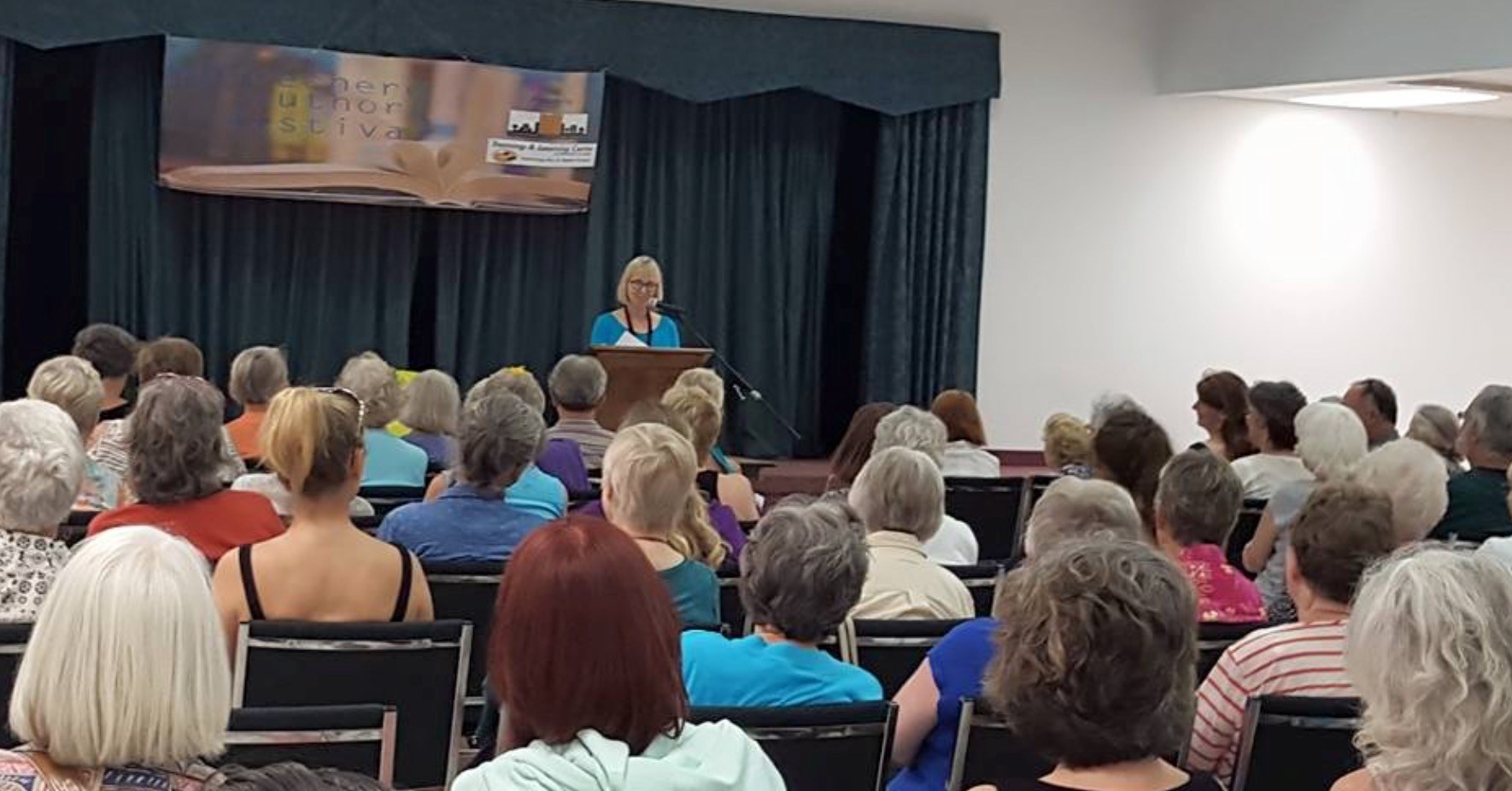
Q: A reading, you’ve said, is more like a talk, an opportunity for the author to engage with the audience. What five pieces of advice would you give authors about to deliver their first reading/talk?
Most writers are introverts and find public speaking daunting. Take heart! Introverts are, as a rule, excellent public speakers, but only because they prepare like crazy.
Here is my process …
Write the talk: every word of it
Put a lot of time into writing a good talk. Write out every word of your presentation. Aim for only about five to ten minutes of reading, and the rest of it talk, leaving time for about fifteen minutes of Q&A at the end. Type the sections of your book you plan to read into your speech.
In general, people love to laugh, and self-deprecating humor goes over well. Remember that you are there to entertain. Readers enjoy personal accounts about the process of creation.
People like to be participants, so ask questions: engage the audience.
Prepare a few funny questions to suggest at the end, should your audience be shy to speak up during the Q&A.
Your entire talk/reading should be about thirty to forty minutes.
Read the talk out loud: every word of it
Read your talk out loud slowly. Edit the passages you are going to read from your book to make them easy for you to read, as well as easy for listeners to understand. Change words you find difficult to pronounce or stumble over. Think of this as theater. A passage read out loud comes across differently from a passage one reads to oneself silently, so adjustments must be made.
Print the talk out in big bold type
Convert your talk to large bold print, and break each paragraph into sentences. Print out your talk and assemble it in a binder. Dog-ear each page so that the pages are easy to turn.

(I wrote about my speaking process in a blog post here, “Finding focus.”)
Rehearse the talk, over and over
A natural, relaxed presentation is achieved with lots of preparation. A few days before your talk, read in front of a mirror, sweeping up from the page with each sentence to meet your own eyes. The day of the talk, do this two or three times. (A caution about going hoarse, however!)
Slow down as you read—don’t race through it.
Try on what you’re planning to wear—is it comfortable? Do you feel good in it? Do you feel like yourself?
Prepare to present the talk … and to expect glitches
Getting comfortable with public speaking comes with practice.
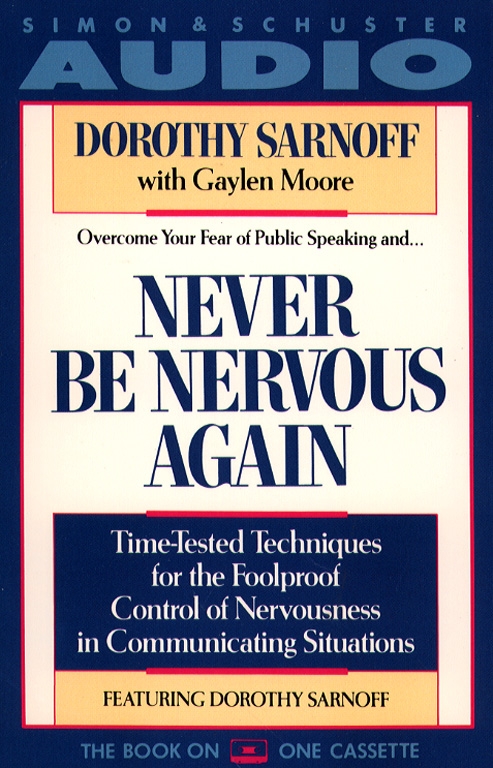
When I was first published, I read and was greatly helped by Never be Nervous Again by Dorothy Sarnoff, who advises speakers to think of the following mantra before a talk: “I’m glad I’m here, I’m glad you’re here, and I know what I know.” Try it! Don’t dread a crowd; embrace it. (I highly recommend this book.)
The most important rule-of-thumb: enjoy yourself — but most of all enjoy the people who have made an effort to come see you …
… including the snoring fan slumped in the front row.
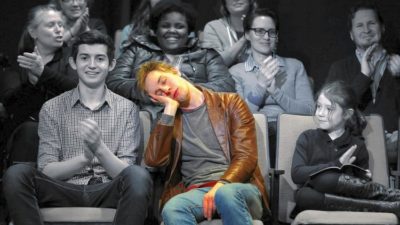
This happens! For amusing stories from actors, read this. (Confession: I’ve once or twice been that snoozing person in the audience myself. When the eyelids start to droop, it can’t be helped!)
I’ve learned that giving out door prizes throughout a talk is not only fun — Who doesn’t love a door prize? — but keeps everyone on their toes.
Find out what the venue is going to be like. Ask for a mike if the group is going to be large. This will allow you to have a more emotional range in your reading. I like to be able to dramatically whisper, for example.
If you plan to give a visual presentation (such as Powerpoint), expect that there will be glitches with the equipment. In my experience, this never fails to happen, and sometimes too with mikes. I’ve learned to bring my own computer, portable projector and cables just in case. If only there was a portable mike one could have on hand, as well.

Plan what you will do in case only one or two people show up. Offer to go to a cafe for a one-on-one chat, for example. Consider this your rite of passage: every author goes through it.
Some of my most memorable talks have been to very small and intimate groups.
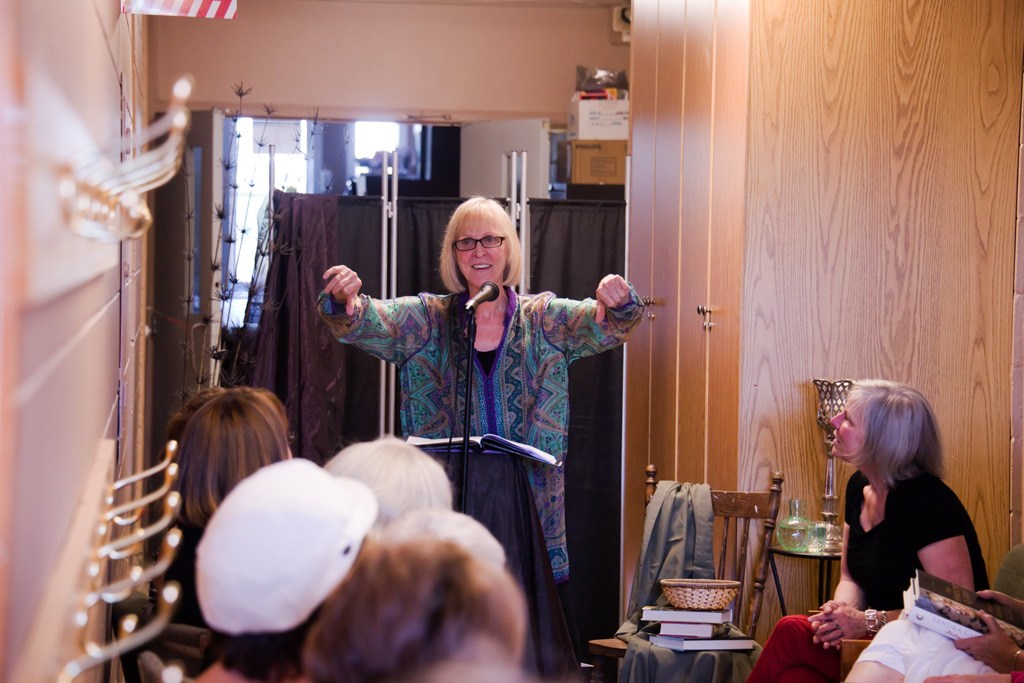
There will be disasters: these will make good stories. Eventually. One of mine was a live TV interview, called an “open-ender” because I was in one city and the interviewer was in another. I could hear his questions through the ear bud in my right ear. And then it fell out and I couldn’t hear a thing. I was filmed scrambling on the floor trying to find it.
I laugh about it now. One wonderful thing about being a writer is that everything is potential material, nothing is wasted.
What public speaking adventures/misadventures have you experienced, either as a speaker or someone in the audience?

by Sandra Gulland | Nov 27, 2018 | Adventures of a Writing Life, Resources for Readers, The Shadow Queen |
This is an exciting winter for me. Not only will I be giving a keynote at the San Miguel Writers Conference in February, but my novel The Shadow Queen has been chosen as “The Big Read.”

What this means is that readers all over San Miguel will be reading The Shadow Queen. (Yes!)
From an article in the Atencion:
“For most of us, who never mastered the intricacies of French history in high school, or never studied it at all, this richly detailed portrait of life in the French court under the rule of Louis XIV will thrust us into an absorbing world, described by an extraordinarily talented writer. It is such an outstanding example of historical fiction that it may open up other alluring worlds to readers who have never ventured into the genre before.
“Every year, the Writers’ Conference hosts the Big Read, inviting everyone in town to read the same book by one of the Conference keynote speakers and then to join one of many Big Read discussion groups around town. We provide discussion questions, present a program to provide background information on the book and the author, and invite all discussion group participants to meet the author in person at a private reception.”
On January 14 there will be an event held to present the novel to book clubs. I’m not able to be there (we will be on the Pacific Coast at that time), but I’m working with the organizing committee to help put together an entertaining presentation.
The first thing I suggested was that they serve beignets, a French pastry featured throughout the novel. That turned out to be fairly easy to arrange since San Miguel is blessed with an excellent French pastry chef.
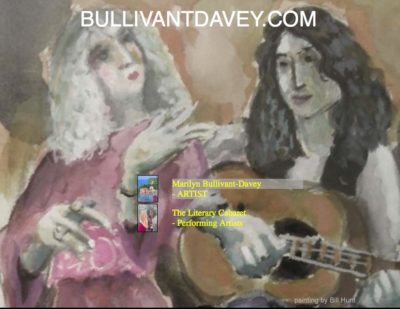
The second thing I suggested was that we recruit my actor friends Rick Davy and Marilyn Buillivant — of Literary Cabaret fame — to put on a short, dramatized reading from the novel. They are keen, and it’s going to be wonderful, but I have since discovered that scripting scenes is not easy!
The committee has also arranged for a filmmaker, Dennis Lanson, to make a short film to show at the event. It will likely partially be an interview of me about the novel — my process and how The Shadow Queen came to be, etc. — and partially images of 17th century theatre and some of the characters in the novel, along with my voice-over commentary. This has entailed a search for images that are of good-enough quality to be projected onto a large screen. Again: not easy!
In going though old blog posts and selecting images, I’ve begun to fall under the spell of that era again. For example, OTT Baroque theatre:

How is it possible not to swoon?
I love, too, this image of Madame de Montespan, the woman we all love to hate:

In order to do all this coherently, I’ve been rereading The Shadow Queen. It has been years since I was in that world, and I have to confess that I’m finding it delightful.
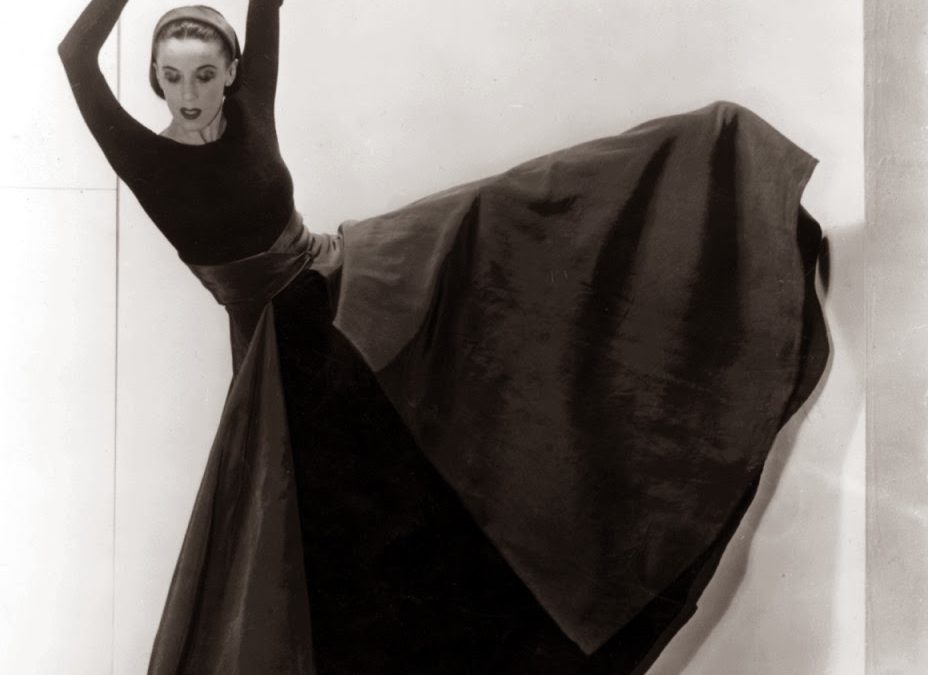
by Sandra Gulland | Mar 1, 2012 | Adventures of a Writing Life, Sandra Gulland INK, The Shadow Queen, The Writing Process, Work in Process (WIP) |
I love reading about the creative process through the lens of other arts. These inspiring quotes are from the amazing dancer, Martha Graham:
There is a vitality, a life force, an energy, a quickening that is translated through you into action, and because there is only one of you in all of time, this expression is unique.
And if you block it, it will never exist through any other medium and it will be lost. The world will not have it.
It is not your business to determine how good it is nor how valuable nor how it compares with other expressions. It is your business to keep it yours clearly and directly, to keep the channel open.
You do not even have to believe in yourself or your work. You have to keep yourself open and aware to the urges that motivate you. Keep the channel open. …
No artist is pleased. [There is] no satisfaction whatever at any time. There is only a queer divine dissatisfaction, a blessed unrest that keeps us marching and makes us more alive than the others.
What’s going on:
I’m working on draft 6.1 of This Bright Darkness (the Next Novel’s working title), trying to get it to my editor by the end of this month. Lots to do!
In the background, Kris Waldherr is working on getting the first of my Sandra Gulland Ink titles ready to launch into the stratosphere. Very exciting! Kris is a wonderful designer, and these e-books are going to be exceptional.
The San Miguel de Allende Writers’ Conference was excellent this year. I’ve notes, notes, and more notes to gather together and share.
Anon …
I’ve a novel to finish!
SaveSave






















